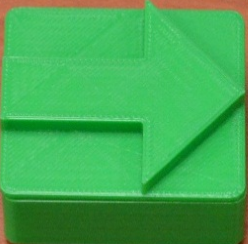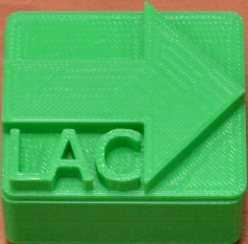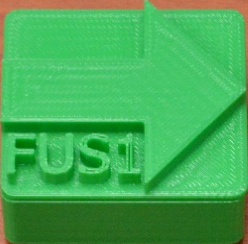Team:RHIT/Project/HumanPractices
From 2014.igem.org
| Line 196: | Line 196: | ||
<td style="border:1px solid black"><h3>General Promoter (2)</h3>General promoters are regions of DNA that provide specific DNA sequences to which RNA polymerase and transcription factors can bind, thus initiating transcription.</td> | <td style="border:1px solid black"><h3>General Promoter (2)</h3>General promoters are regions of DNA that provide specific DNA sequences to which RNA polymerase and transcription factors can bind, thus initiating transcription.</td> | ||
</tr> | </tr> | ||
| + | |||
<tr style="background-color:#D0DFFF; border:1px solid black"> | <tr style="background-color:#D0DFFF; border:1px solid black"> | ||
<td style="border:1px solid black"><img src="http://i1265.photobucket.com/albums/jj502/bauhand/LacPromoter_zps85407759.png" width="100px"></td> | <td style="border:1px solid black"><img src="http://i1265.photobucket.com/albums/jj502/bauhand/LacPromoter_zps85407759.png" width="100px"></td> | ||
<td style="border:1px solid black"><h3>Lac Promoter</h3>The lactate (lac) promoter is inducible, which means that it is turned "on" and allows for RNA polymerase binding and transcription initiation when lactate is present in the cell.</td> | <td style="border:1px solid black"><h3>Lac Promoter</h3>The lactate (lac) promoter is inducible, which means that it is turned "on" and allows for RNA polymerase binding and transcription initiation when lactate is present in the cell.</td> | ||
</tr> | </tr> | ||
| + | |||
<tr style="background-color:#D0DFFF; border:1px solid black"> | <tr style="background-color:#D0DFFF; border:1px solid black"> | ||
<td style="border:1px solid black"><img src="http://i1265.photobucket.com/albums/jj502/bauhand/Fus1Promoter_zpsf9d0a51f.png" width="100px"></td> | <td style="border:1px solid black"><img src="http://i1265.photobucket.com/albums/jj502/bauhand/Fus1Promoter_zpsf9d0a51f.png" width="100px"></td> | ||
| - | <td style="border:1px solid black">The Fus1 promoter is a pheromone-inducible yeast promoter. A gene of interest can be expressed when the Fus1 promoter is induced by the appropriate yeast mating pheromone.</td> | + | <td style="border:1px solid black" align="top"><h3 Fus1 Promoter</h3>The Fus1 promoter is a pheromone-inducible yeast promoter. A gene of interest can be expressed when the Fus1 promoter is induced by the appropriate yeast mating pheromone.</td> |
</tr> | </tr> | ||
</table> | </table> | ||
Revision as of 15:15, 18 August 2014
Overview
Synthetic biology is a rapidly emerging field in the world and has been getting a lot of attention in the media recently. Even with all of the press that different forms of synthetic biology have been getting, there is actually little that is known about this newly emerging field. For this reason, the Rose-Hulman Institute of Technology iGEM team created Victor the Vector to aid in teaching the youth of the world about synthetic biology.
Victor the Vector is a hands-on interactive device that allows students to build basic synthetic biological systems and watch instructional videos about the systems that were built. This way students can experience building synthetic biological systems without the need of a wet lab or any wet lab experience. This is done by modeling the shape and design of Victor the Vector as a plasmid. The figure below shows the design of Victor the Vector.
As shown in the picture of Victor the Vector above, there are twelve slots in which different parts of a synthetic biological system can be placed. This way all the user has to do is take the provided parts and plug them into Victor the Vector in the correct order to produce a viable synthetic biology system. This is meant to mimic how synthetic biologists take different genetic parts and put them together in a novel way on a plasmid. If the student has plugged the correct pieces into Victor the Vector in the correct order then it will initiate an instructional video which the student can watch to learn more about the system that he or she has built. This way students get a hands-on approach with building synthetic biological systems and a basic understanding of some of the components and the order in which parts need to be organized to create a synthetic biological system. Our hope is that by giving the students a device to play and interact with, they will gain a better appreciation and understanding of this nanoscale science.
-
Victor the Vector is an electromechanical device that allows students to practice building synthetic biological systems that are programmed into the device. This way if the user builds the system correctly, the device will send a signal to the student's computer which will activate an instructional video. This is achieved by giving each plug in part a unique voltage so that every system that is built has a unique series of voltages at the output of the device. See the figure below for a schematic of the wiring in the device.

Two onboard NI-DAQs convert the signal from analog to digital. The digital signal is then sent from the NI-DAQs to the user's computer via usb. The digital data is then imported into Matlab where it is processed and used to initiate the instructional video that is associated with the system that was built. This way the user gets instant feedback on whether or not they have built the system properly. Currently there are only five synthetic biological systems pre-programmed into the device. However, the device has been designed to allow for addition of more pre-programmed synthetic biological systems for future models.
-
Part Description 
General Promoter (2)
General promoters are regions of DNA that provide specific DNA sequences to which RNA polymerase and transcription factors can bind, thus initiating transcription.
Lac Promoter
The lactate (lac) promoter is inducible, which means that it is turned "on" and allows for RNA polymerase binding and transcription initiation when lactate is present in the cell.
The Fus1 promoter is a pheromone-inducible yeast promoter. A gene of interest can be expressed when the Fus1 promoter is induced by the appropriate yeast mating pheromone.
-
To view our Ethics pamphlet click here!
-
To view our Business Plan click here
 "
"


